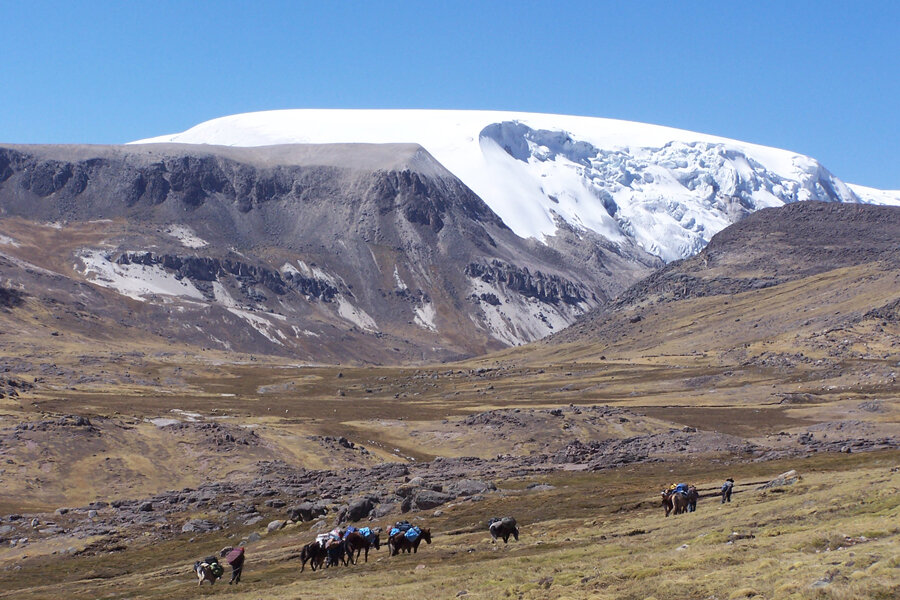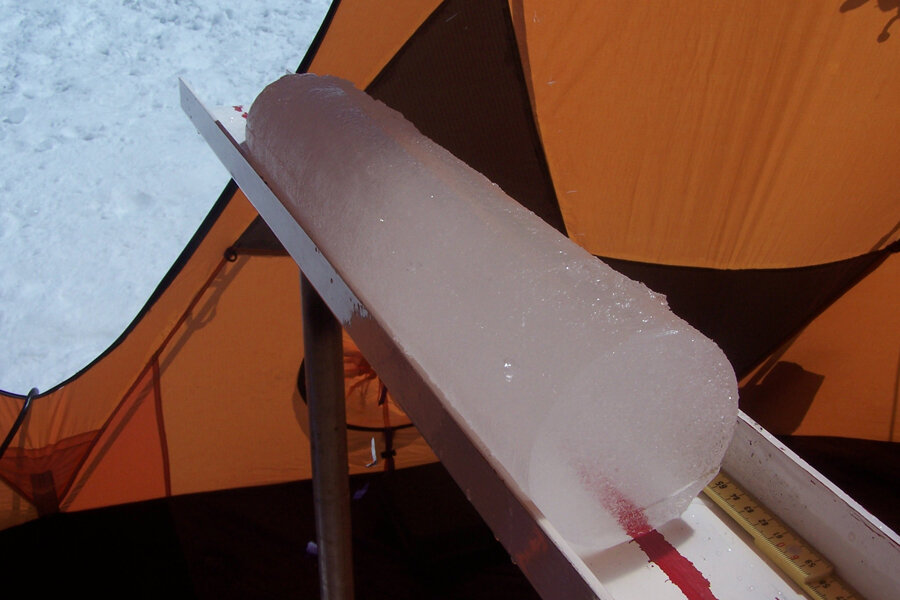Humans polluted the air long before Industrial Revolution, study finds
Loading...
Humans may have been pumping pollutants into the air much longer than previously thought.
A team led by Paolo Gabrielli of the Byrd Polar and Climate Research Center at the Ohio State University has found evidence of human-induced air pollution that predates the Industrial Revolution by over 200 years, according to a new study published in PNAS.
In the 16th century, the Spanish Empire began forcing Incas to mine for silver ore from the “mountaintop mines” of Potosí (present-day Bolivia). The Inca already had a process for refining the ore, but the Spanish introduced a new method that greatly increased productivity – by finely grinding the ore and exposing it to mercury, they could separate out the precious metal. But because silver ore actually contains more lead than silver, this process created billowing clouds of lead dust over Andean mountain ranges. Winds carried the plume hundreds of miles, depositing a small amount on the Quelccaya Ice Cap in Peru. For over 400 years, it remained preserved beneath snow and ice.
Then, in 2003, researchers from Ohio State University removed a series of Quelccaya ice cores, which can reveal layers of trapped airborne particles over generations, as a way of piecing together the history of our planet's climate.
"We consider the Quelccaya ice record to be a kind of 'Rosetta Stone' for gauging climate change in the tropics because of its very high-resolution, 1,800-year history and its proximity to locations of ancient Andean cultures," says study co-author Lonnie Thompson.
By identifying certain trace elements – antimony, arsenic, bismuth, molybdenum, and most of all lead – Dr. Gabrielli’s team was able to trace the dust back to the Potosí mines.
“The Quelccaya ice cap is one of the few sites that preserve the characteristics of the past atmosphere,” Gabrielli says. “There are relatively few high altitude glaciers in the tropics. Among these, only a few are suitable to preserve this environmental information in a sequential chronological order.”
Chemical analyses of the core showed that, just before 1600 and continuing on until the early 1800s, unusually large amounts of those elements were deposited on the ice cap. That time period coincides with the beginning of forced mining in the late 1500s and the Latin American wars of independence (Peru and Bolivia achieved independence in the 1820s).
“While it was known that mining and metallurgic operations had a significant impact on the areas that hosted [them] in Peru and Bolivia,” Gabrielli says, “until now it was unknown how large the spatial scale of this impact was. The high-altitude ice cap of Quelccaya, because it is so remote with respect to the largest old mines of South America, is indicative that these pre-industrial operations had an impact on the atmosphere of the entire continent.”
The Quelccaya core represents the earliest record of significant, human-induced air pollution. As such, it could also aid our understanding of current and future environmental issues.
“In addition to pollution histories,” Gabrielli says, “ice cores also define the natural background of the atmosphere composition before the human intervention. Thus the efficacy of any policy of mitigation of air pollution can be evaluated by comparing the concentration of pollutants in modern snow samples with those measured in old pristine ice.”
“In the ’60s, ice core studies of lead deposition in Greenland ice allowed us to realize that atmospheric pollution of this toxic heavy metal was a global problem,” Gabrielli adds, “forcing nations to implement policies to reduce lead emissions."
But Gabrielli is careful to make the distinction between environmental pollution and climate change – he says the discovery doesn’t say much of anything about global warming.
“Our study is indicative of past and modern environmental variations that do not seem linked to past and current climatic variations,” Gabrielli says.
But the finding does tell us something else momentous – that humans have been making marked changes on the environment for much longer than previously thought. In doing so, it could also inform international geological governing bodies as they decide whether to call the current epoch the Anthropocene. The Anthropocene, which means “Age of Humans,” would reference the amount of time humans have been responsible for significant environmental impact.
“The Industrial Revolution is often indicated as the beginning of the Anthropocene,” Gabrielli says. “Our results, pointing to a significant, large-scale, pre-industrial pollution, indicate the difficulty in defining an unequivocal onset of the Anthropocene, and suggests that this new epoch emerged discontinuously through space and time during human history. However, because the largest pollution in the Quelccaya ice core is also recorded during the 20th century, our record confirms that the advent of the Anthropocene is now completed.”
"The proposal that the 'Anthropocene' should be ratified as a unit of the Geological Time Scale is an important one,” Dr. Thompson adds. “It is important for describing how humans are changing the composition of the atmosphere since the onset of the Industrial Revolution, the introduction of radiation from our atmospheric thermonuclear testing, and future impacts of the human-induced acidification of the world's oceans. However, in many ways the Anthropocene is a concept in search of a distinct stratigraphic record. One question is whether the Anthropocene is a unit of human history or of Earth History."
Until those questions can be answered, Gabrielli’s team continues in search of hidden environmental records. The Himalayan Dasuopu core, which is the highest altitude ice core ever retrieved and holds 8,000 years of climate history, is their new focus.
“This ice core from the Himalaya has the potential to have recorded the atmospheric impact of human activities from some of the oldest civilizations of the planet,” Gabrielli says, “such as those that developed in China and India. In these areas, past mining and metallurgic activities have the potential to have left, in the pristine snow of the Himalaya, their ‘smoking gun.’”









